I don't want to start an argument, but that's inevitable when you talk about the subject of soul, especially in music. Marvin Gaye, of course, had soul. Robin Thicke doesn't. What's a soulful garden? It's expressive of you and your family. It's authentic, sincere, personal, deeply felt, of the moment — I'm happy with a definition that says you know soul when you see it.
In a garden, blooming chrysanthemums bought from Safeway in March aren't soulful. But a tree planted to celebrate the birth of a child is. Why add soulful touches to your garden? Mainly because that will help you and your family feel much more at home there.
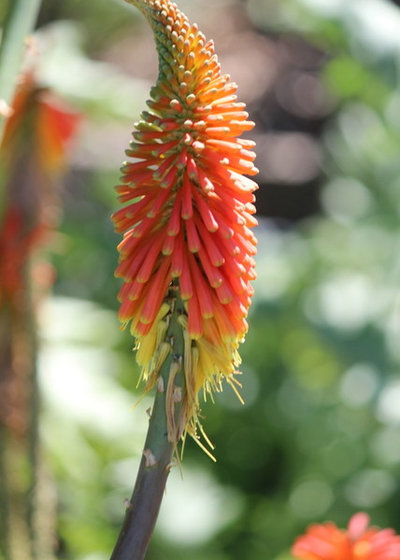 1. Plant living memories.
1. Plant living memories. When I was a kid, my mother grew red-hot poker, shown, and many other old-fashioned plants. My wife fondly remembers 'Cecile Brunner' roses in her family's garden.
The big yard of a beloved neighbor was nearly overrun by poor man's orchid (
Impatiens balfourii), which spread by seeds every summer. Growing plants like those brings back memories of people — old times, good times, sad times.
Red-hot poker gives you the best of both worlds. The nostalgic yellow and orange type is still a dependable perennial. Flashy new varieties, from compact to extra tall, bring the same drama in colors such as solid yellow and almost-white.
Common name: Red-hot poker
Botanical name: Kniphofia hybrids
Where it will grow: USDA zones 5 to 10 (find your zone)
Water requirement: Moderate
Light requirement: Full sun or partial shade
Mature size: 2 to 4 feet, depending on variety
Growing tips: Plant taller varieties at the back of a border. In cold clmates protect clumps in winter. Divide crowded clumps in spring.
More about growing red-hot poker
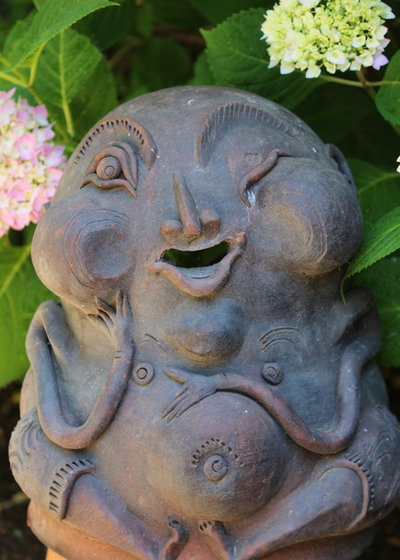 2. Reflect where you've been and who you are.
2. Reflect where you've been and who you are. More than 25 years ago in Bali, I spent $10 at most for two terra-cotta pieces (one is shown) a foot or so tall. I can't imagine how we got them home without breaking them.
They've been hanging around our garden ever since, and every time I see one of them, I recall the good times with the friends who traveled with us, and I think of the seller. I asked him the name of the figure. In a land of thousands of spirits, I expected a spiritual answer. He said the figure was a "funny man."
Many a travel souvenir can work in a garden, as long as the piece is fairly weatherproof. Terra-cotta is especially fitting.
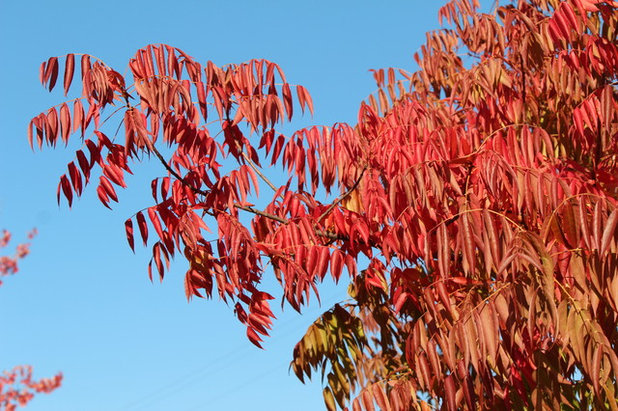 3. Favor the season shouters.
3. Favor the season shouters. A soulful garden is dynamic — ever changing with the seasons. It's nice to walk into your garden and know what day of the year it is by the plants performing there and then, even if their foliage, flowers or fruits last just a couple of weeks.
Examples of plants that shout the season abound. Holly and toyon berries announce the holiday season. Crocus and forsythia tell you it's spring. In my mild-climate area, where the season changes are all too subtle, we know it's fall when Chinese pistache bursts into flaming orange and red.
Botanical name: Pistacia chinensis
Common name: Chinese pistache
Where it will grow: Zones 6 to 9
Water requirement: Moderate, but this tree is flexible enough to accept light to heavy watering.
Light requirement: Full sun
Mature size: 30 to 60 feet tall and 30 to 40 feet wide
Growing tips: It's not fussy about soil or water, but the fall color usually is more pronounced in drier conditions. It's a bit slow to get going; start with a larger nursery tree if you’re in a hurry. Prune it during winter to shape it and control the size.
More about growing Chinese pistache
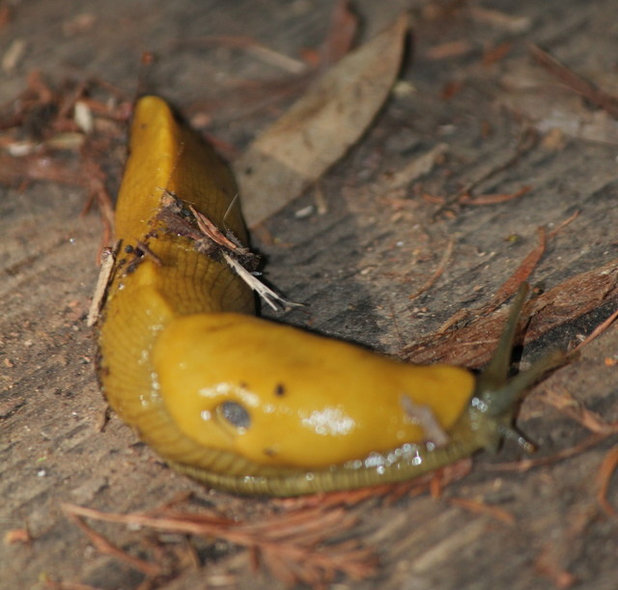 4. Embrace even the banana slug.
4. Embrace even the banana slug. Wild creatures can add life to a garden, and some critters are more welcome than others. But don't let general ickiness rule out a visitor like the Pacific banana slug (denizen of redwood forests and mascot of the University of California, Santa Cruz). This supersize, shell-less, extra-slimy mollusk doesn't hurt people or plants, and discovering it in your garden signifies that you live in redwood country or that you have created its natural redwood habitat — an environment that also suits lovely plants like azaleas, ferns and redwood sorrel. Probably no one has written a book on attracting banana slugs (although a grad student did write a paper on their sexual habits), but there's plenty of advice on attracting more typical garden visitors, such as butterflies and birds.
One suggestion for increasing the number of welcome visitors: Start by growing plants native to your area — local native bees, birds and butterflies will seek them out.
How to attract birds and butterflies
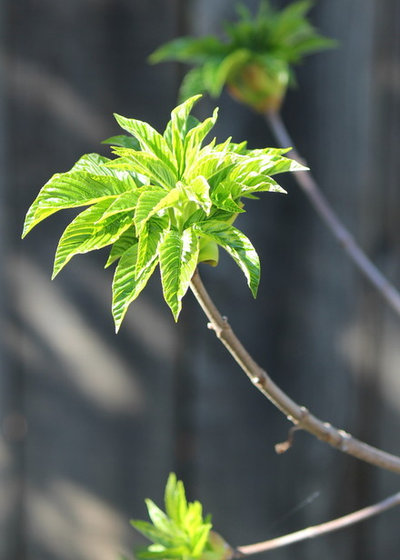 5. Support your local flora.
5. Support your local flora. There's nothing like plants native to your area to connect you and your family to the rhythms and seasons of where you live. Instead of pampering an exotic plant, why not grow, say, a native redbud or dogwood and see how it compares to the same plants in the wild?
Does it bloom at the same time? What does it do with more irrigation or pruning? The California buckeye is not a typical or popular garden plant, but it offers a nature lesson in the way it is adapted to the state's seasons. It's the first tree to sport new spring leaves, shown, sometimes even in January, when rains make water abundant. It's the first to lose its leaves (even in an irrigated garden), going dormant as early as July, during the long, dry season. In fall its big brown seeds hang gracefully from bare branches.
Common name: California buckeye
Botanical name: Aesculus californica
Where it will grow: Zones 7 to 9
Water requirement: Light or more; more helps the tree hold on to leaves longer
Light requirement: Full sun
Mature size: 10 to 20 feet tall and up to 30 feet wide
Growing tips: Plant it in a wild section of your garden, where you don't mind bare branches for half the year.
Why native plants make gardens better
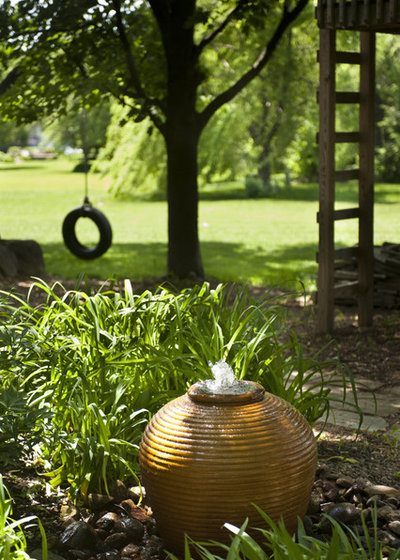
Aquascape
6. Encourage real play. Hang a tire from a shade tree. Put a badminton net on the lawn. Build a simple tree house: a platform with safety rails. Simple garden fun can encourage spontaneity, hanging out and daydreaming. Just saying, most families don't need elaborate play structures in their gardens. These days kids get plenty of jump houses etc. at birthday parties and other events.
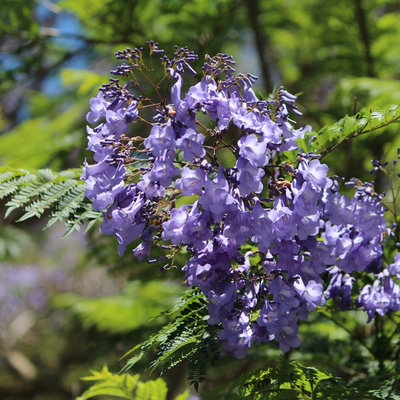 7. Celebrate imperfections.
7. Celebrate imperfections. Kind of as in life, some of the best things in the garden come with flaws — maybe a bit of chaos and disorder. One of my favorite trees is the jacaranda, beautiful in bloom but messy to live with. Instead of complaining about the mess that jacaranda's fallen leaves and flowers make on your patio, enjoy the beautiful deep blue-purple blossoms for their brief time.
Botanical name: Jacaranda mimosifoliaWhere it will grow: Zones 10 to 11
Water requirement: Light to moderate; gets along with little water once established
Light requirement: Full sun
Mature size: 25 to 40 feet tall and 25 to 35 feet wide
Growing tips: Make sure you have room for a big tree. Plant it where dropping flowers, leaves and seedpods won't create a messy problem. In marginal climates don't make jacaranda a centerpiece of your landscape — frost can kill it back to the ground. Water it for the first few years, then reduce irrigation. Prune it in winter to control the shape and size.
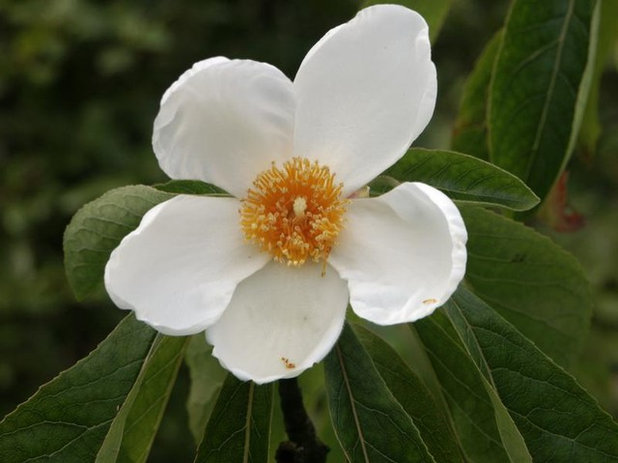 8. Grow a storyteller.
8. Grow a storyteller. A garden has extra depth when some of your plants come with stories. They can be fun or enlightening or just icebreakers at a gathering.
A classic storied plant is franklinia, a small deciduous tree, much like a dogwood, with a unique history. It was first collected in 1770 in the southeastern U.S. by one of America's great early botanists, John Bartram, who named it after his friend Benjamin Franklin.
The tree has not been seen in the wild since 1790, but it has been grown in gardens since and is still sold today at nurseries. It's a handsome landscape tree with fragrant, white, yellow-centered flowers plus fall color.
Botanical name: Franklinia alatamaha Where it will grow: Zones 5 to 9
Water requirement: Moderate
Light requirement: Partial shade
Mature size: 10 to 20 feet tall and 6 to 15 feet wide
Growing tips: Provide the same conditions as for dogwood, particularly well-drained, compost-rich, acidic soil, kept moist.
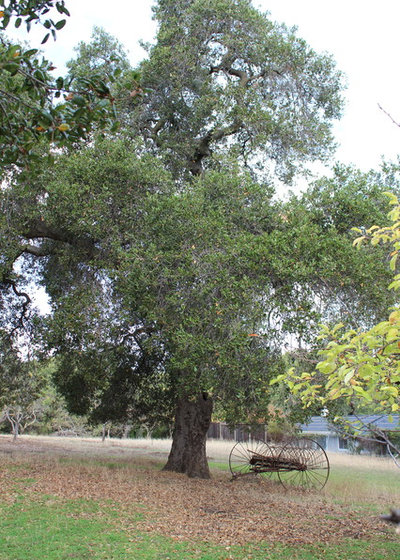 9. Plant a tree no matter how old you are.
9. Plant a tree no matter how old you are. There's a Greek proverb, “Society grows great when old men plant trees whose shade they know they shall never sit in.” Actually, I have seen the same thought attributed to many others, including newspaper columnist Walter Lippman and philosopher Edmund Burke.
No matter, the thought is a good one. But what tree to plant? It depends on your space and climate. The main thing is that you'll want a tree that will endure. Not a fast-growing, brittle tree like a fruitless mulberry. Not a disease-prone one like an ash. Oaks are classic. My personal choice: coast live oak (although we now have to be concerned about sudden oak death). I haven't planted a live oak of my own. But squirrels have planted five trees for me, in their own way also thinking of future generations.
Botanical name: Quercus agrifoliaCommon name: Coast live oak
Where it will grow: Zones 9 to 11
Water requirement: Light; existing trees usually suffer if watered in summer
Light requirement: Full sun
Mature size: Potentially enormous with time — up to 70 feet tall with an equal spread
Growing tips: It's susceptible to oak root fungus; avoid summer watering. Be aware of sudden oak death, which has been killing thousands (or millions) of Northern California’s coast live oaks and related species for the past two decades.
More: A Mom, a Garden and a Gift for the Neighbors





